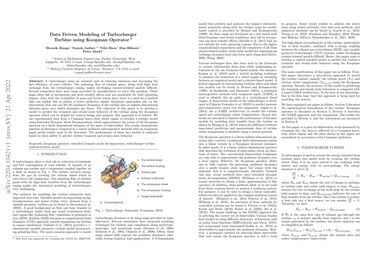Data Driven Modeling of Turbocharger Turbine using Koopman Operator
A turbocharger plays an essential part in reducing emissions and increasing the fuel efficiency of road vehicles. The pulsating flow of exhaust gases, along with high heat exchange from the turbocharger casing, makes developing control-oriented models difficult. Several researchers have used maps provided by manufacturers to solve this problem. These maps often fail to incorporate any heat transfer effects and are unsuitable for wide operating regions. Also, with the availability of more and better sensor data, there is a need for a method that can exploit this to obtain a better predictive model. Koopman approaches rely on the observation that one can lift the nonlinear dynamics of the turbine into an infinite-dimensional function space over which dynamics are linear. The objective of this paper is to develop a model to predict the transient and steady-state behavior of the turbine using the Koopman operator which can be helpful for control design and analysis. Our approach is as follows. We use experimental data from a Cummins heavy-duty diesel engine to develop a turbine model using Extended Dynamic Mode Decomposition, which approximates the action of the Koopman operator on a finite-dimensional subspace of the space of observables. The results demonstrate superior performance compared to a tuned nonlinear autoregressive network with an exogenous input model widely used in the literature. The performance of these two models is analyzed based on their ability to predict turbine transient and steady-state behavior.
PDF Abstract